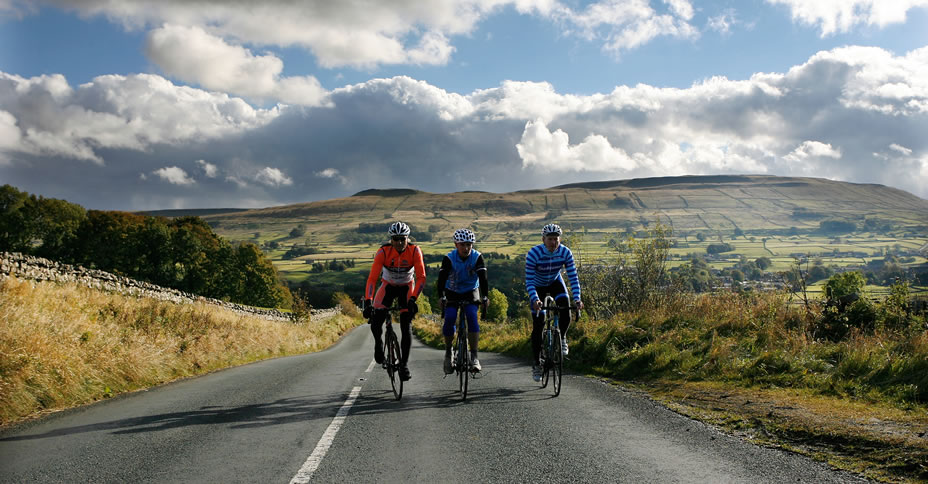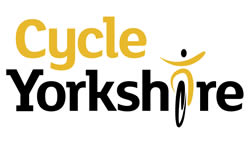
Be safe
Urban Cycling | Rural Cycling
 Download a Cycling Safety Leaflet »
Download a Cycling Safety Leaflet »
Urban Cycling
The Urban Cycle guide is a basic commuters bible to tackling some of the tricky bits you may come across in your daily commute. The guide includes sections on roundabout, junctions and filtering in traffic and offers practical advice and tips on what to do when commuting in an urban environment.
The guide has been developed and produced by road safety teams across the Yorkshire and Humber region and was filmed in York, Leeds and Sheffield.
A video guide
Check out a great selection of films on safe cycling in towns and cities
Handy tips
Junctions and HGV/Buses turning left
When you approach a junction and you come up behind a large vehicle such as HGV or bus indicating left then stay behind that vehicle to avoid being squeezed off the road when it makes the turn, should you arrive first at the junction, pull into the middle of the lane a little way in front of you so that you block the space and allowing the driver to see you clearly.
Parked Cars
When travelling alongside a line of parked cars, look for individuals in the driving seat which may indicate that they are about to move off or that a driver's door may open. Drivers checking mirrors as well as the position of the front wheels on the road my also all be indications of a car about to pull into the road.
Queuing traffic on the approach to a junction
As you approach queuing traffic at a junction, look for any signage that indicates if there is a cycle lane and an advanced stop line. Beware of vehicles turning left or passengers exiting vehicles and look for clues which may signal this such as indicators or people checking their mirrors. Feed carefully through the traffic and take up a primary position in the advanced stop box.
Rural Cycling
Cycling Hints and Tips for when out in the Country.
Be Prepared before you set off.
Make sure you have the right kit and equipment for both you, your bike and the weather
• Check the route, Ordnance Survey maps will give you a good idea of any changes in gradient and if the route takes you down major roads.
• Carry spares - A couple of spare inner tubes, bike pump, tyre levers, spare chain links and a multi tool - if you are riding in the countryside it might be a long walk to the nearest bike shop.
• Lights - essential during the winter but worth taking with you in case you end up out for longer then expected.
• Roadworthy - Make sure your bike is roadworthy, check the brakes, as you will need them for the descents.
• Sustenance - Carry at least two bottles of water, energy gels and bars and take these on at regular intervals - Once you are thirsty you are already dehydrated.
• Layer clothing - Make sure it is water and windproof - tops of hills can be exposed even in summer and if you break down or need to stop for any length of time you can become cold very quickly.
• Glasses - Sports glasses can be useful as they keep dirt/grit and bugs out your eyes.
• Protect yourself - Make sure you have the right protective equipment for you and your bike.
When on the Road
• Traffic - Be aware of other traffic, especially in rural areas - drivers may not be expecting to see cyclists.
• Share the road - Expect to share the road with large farm vehicles and buses, these may need more room then anticipated especially on narrow country roads.
• The competitive edge - some segments of a route may allow you to go faster than is safe to do so - road conditions and terrain can change suddenly. Beware of hidden dips and blind bends.
Riding in a Group
• Riding in groups - Ensure that cyclists in the group know how to ride in a group. Agree on signals and then follow these top tips to maintaining a safe group riding position:
• Distance - If you are riding two abreast, keep your handle bars in line with the cyclist next to you and elbows between 15- 50cm apart.
• Pace - Maintain a steady pace and a straight line, whilst it is tempting to get ½ a wheel space in front this can lead to an increase in the overall pace.
• Cornering - If you are a rider on the outside of a corner try and increase the speed a little to maintain your handlebar position.
• Space - Do not pin the inside rider to the kerb, allow them some space to avoid, drain covers and road debris.
• Conversely if you are the inside rider don't drift to far out from the kerb as the outside rider may end up on the opposite side of the road riding into oncoming traffic.
• Make room, which will allow outside riders in behind you should there be a problem.
Code of conduct for Equestrians and Cyclists
Encouraging good communication and interaction between cyclists and equestrians and increasing awareness of their respective needs will improve everyone's enjoyment of the outdoors.
Equestrians and cyclists are both vulnerable road users. They share similar risks when on the road with the need to be safe and to have access to more safe off road riding.
Check out this handy guide that provides lots of information on this area.
Download our Cycle Yorkshire App
Cycle Yorkshire: Ride The Routes" follows the two-day stages of the 2014 Yorkshire Grand Départ. The app encompasses information and videos about the routes, hints and tips on how to cycle specific sections and general rural cycling advice. It can be downloaded free below.
Watch some teaser clips below:






